|
Intro
The Big Problem
Einstein
Quantum
Curved Spacetime
Q. Gravity
Black Holes
Cosmos
Extra
The Most Important Problem in Physics
The single most important question in physics has been with us for nearly 90 years, and in the last 20-30 yrs has become central to fields ranging from astronomy and string theory to experimental particle physics. This question is - how do we reconcile our theory of gravity and spacetime (ie., Einstein's "General Theory of Relativity") with our theory of matter (ie., Quantum Mechanics)?
- Einstein's theory explains phenomena in the cosmos, and has made mind-bending predictions like those of black holes and of the Big Bang - so outlandish that even Einstein could not believe them - and yet which we now know to be correct. For more on Einstein and his theory, see here.
- Quantum Mechanics describes everything about matter, down to the tiniest subnuclear scales, and explains all the facts of chemistry and molecular biology - but it is also a very strange theory, with all sorts of bizarre consequences (wave-particle duality, entanglement, the 'Schrodinger Cat paradox', etc). For more on Quantum Mechanics, see here.
Despite huge efforts, both theories have survived all attempts to falsify them. But - they are not consistent with each other! So science is built on a marriage of 2 incompatible partners. To solve this problem is the goal of "quantum gravity", a name given to a theory that does not yet exist. Because physics is the foundation of all other sciences, notably chemistry and biology, some argue this is the most important problem in all of science. For more on Quantum Gravity, see here.
The problem has become more and more urgent in recent years, for 3 reasons
|
(i). Black holes exist in profusion in the universe - and almost all massive galaxies contain 'supermassive black holes', which control the life cycle of that galaxy. Luckily our own Milky Way, even though it is rather large, contains a very small supermassive black hole - otherwise the history of the Milky Way would have been very different! The problem: to understand the nature of the "spacetime singularity" at the core of the black hole, we need to understand how to combine gravity and Quantum mechanics. For more on black holes and our modern picture of the universe, see here.
|
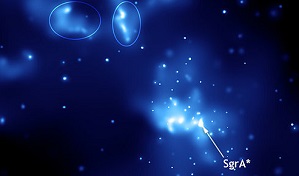
Our own supermassive black hole: from 25,000 light years away.
|
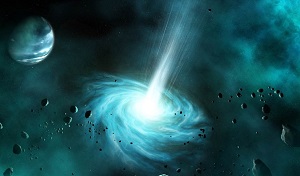
What it would look like from close up. |
(ii). To understand the early universe - down to tiny fractions of a second after the Big Bang - and to understand what the Big Bang really was and why it happened, we need to "quantize gravity". We also need to know how our present theory of elementary particles - particles which first appeared in the early universe - is changed by gravity; and we need to understand what is dark energy, and why the cosmological constant is so small. For more on the Big Bang, the early universe, and the cosmos, see here.
|
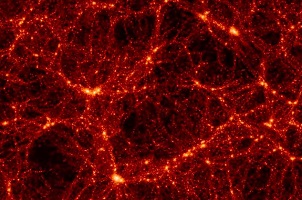
Simulation of the distribution of dark matter in the early universe..
|
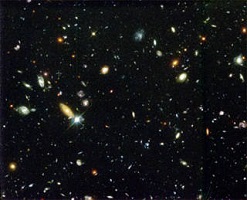
Looking at the early universe - this Hubble "deep field" photo looks back billions of years. |
| |
(iii). We are getting ever closer to making 'macroscopic quantum phenomena' in physics labs on earth (examples include quantum computers, and various "quantum devices"). But if such states exist - and the standard 'Copenhagen interpretation' of quantum mechanics says they cannot, whereas lab experiments indicate more and more that they do - then quantum mechanics itself will face a huge crisis. Many feel that only gravity will save it from this crisis, in some yet unknown theory. For more on the wonderful but bizarre world of Quantum Mechanics, see here.
|

Schrodinger's Cat - alive, or dead, or maybe just asleep ?
|
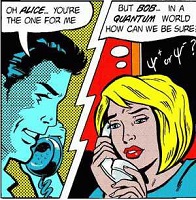
The problems of entanglement |
|







